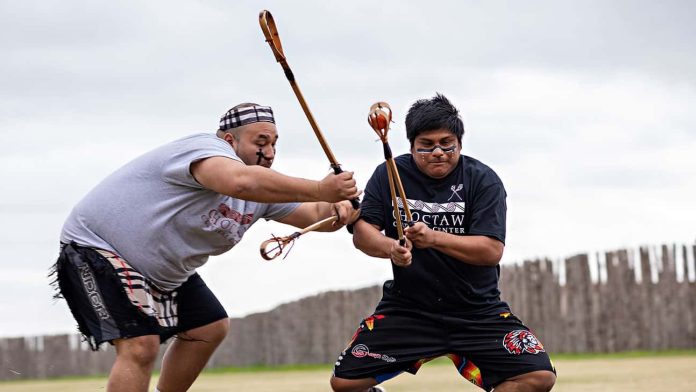In the heartlands of North America, long before the arrival of European settlers, Indigenous communities engaged in a game that was more than just a pastime; it was a cultural expression, a spiritual ritual, and a way to bond with fellow tribesmen. This ancient game, known as stickball, holds a special place in the history and traditions of Indigenous North American people.
In this article, we will delve into the fascinating world of the Indigenous North American stickball game, exploring its history, significance, rules, and its enduring legacy in contemporary society.
Understanding the Origins of Stickball
A Game with Ancient Roots
Stickball, also known by various Indigenous names such as “Lacrosse” or “Tewaarathon,” is believed to have originated more than a thousand years ago. It was played by various Indigenous tribes across North America, including the Cherokee, Choctaw, Iroquois, and many others.
Spiritual Significance
For Indigenous communities, stickball was not just a sport; it had deep spiritual meaning. It was often played to settle disputes, offer prayers, and honor the Creator. The game was considered a gift from the Creator and was surrounded by sacred rituals.
The Basics of Stickball
The Equipment
Stickball involves minimal equipment. Players use two sticks—a long stick with a netted pouch at one end called a “stick” or “crosse” and a shorter stick used for scooping and throwing called a “ball stick.” The ball, traditionally made of leather or wood, is small and hard.
The Objective
The objective of the game is to score points by throwing the ball into the opposing team’s goal, which can be a designated area or a tree stump, depending on the local rules.
Team Structure
Stickball teams typically consist of 6 to 12 players on each side. The rules and team size can vary among different Indigenous communities.
The Game in Action
Fast-Paced and Physical
Stickball is a high-energy game that involves intense physical contact. Players use their sticks to pass, catch, and carry the ball. The game can get quite physical, with players using their sticks to block opponents and gain possession of the ball.
Cultural Significance
During stickball games, the players often wear traditional clothing and paint their faces with tribal symbols. These elements connect the game to its Indigenous heritage and add to the cultural richness of the event.
The Legacy of Stickball
Preservation of Tradition
In modern times, Indigenous communities continue to play stickball, not only as a recreational activity but also as a means of preserving their cultural heritage. Stickball tournaments and events are held across North America, bringing tribes together to celebrate their shared history.
Bridging Generations
Stickball serves as a bridge between generations, allowing elders to pass down their knowledge and traditions to the younger members of the community. It fosters a sense of belonging and pride among Indigenous youth.
The Indigenous North American stickball game is a testament to the resilience and richness of Indigenous cultures. It is a sport that goes beyond competition; it embodies centuries of history, spirituality, and community bonds. As we celebrate the enduring legacy of stickball, let us remember the importance of preserving and honoring the traditions of Indigenous North American people.

